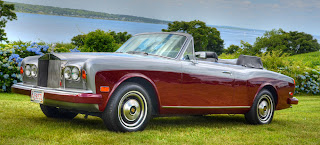Over the past thirty years, car maintenance has changed dramatically. Since most owners of collector cars are older than 45, this means that they have seen this transformation in their driving lifetime.
Oil changes have gone from every three months or 3,000 miles to 7,500 miles or more, and one to two years. Cars needed new spark plugs every 15,000 miles; today’s cars go 60,000 or even 100,000 miles on a set of plugs.
What do the new maintenance guidelines mean for old cars today? Do they apply to vintage cars, or only to new cars? Let’s look at oil. BMW says its OK to drive a new 5-Series 15,000 miles before changing the oil because they use a special long-life formulation. What does that mean for an owner of a 1983 5-Series? Can he fill his car with today’s super-duper BMW oil and get 15,000 miles on a change?
In most cases, the answer is NO. Maintenance requirements for new cars do not translate retroactively to older cars simply because thinking has changed and fluids and parts have evolved.
Older cars were made in a time of looser tolerances. That’s evident when you look at the number of adjustments on a vintage car. Fenders – to choose one example - have slotted holes so you can move them for alignment. Everything is adjustable. New cars are the opposite – very little is adjustable. Parts are machined precisely and fit exactly as intended. At least they’re supposed to!
The same situation holds true in the engine. Where a 2012 engine might have bearing clearances of 1.5 thousandths of an inch, a 1952 car might have three or five times that much clearance. Some is a result of looser production tolerances when new, and some the result of wear and age. What does that mean? It means the older engine will require a thicker oil to prevent metal-on-metal galling. It means the long-life attributes of the new oil are not the determining factor in its suitability for use in an old car – viscosity is! And the new oil is in fact the wrong viscosity for the old car.
So the use of oil made for a 2012 BMW in a thirty or forty-year-old BMW might actually be destructive. What about going the other way, you ask? The use of the older car’s thicker oil in a new BMW could result in excess pressure, and damage to engine components that were not even invented in the 1970s. Furthermore, the absence of the long-life additives would contribute to premature failure.
When we consider how long an oil will last, we look at two things: How rugged is the oil, and how fast will it get degraded by combustion byproducts as the engine runs? Oil that has the weight rating for old cars does not have the long-life wear additives needed for new engines. That’s one basic fact. Old engines generated more waste product when they ran, right from day one. That’s the second key fact. We all know old engines polluted more. What many people don’t realize is that some of that pollution ends up in the engine’s crankcase, polluting the oil
What that means is this: The life of oil in a vintage car is usually determined by contamination of the oil, either from sludge in the motor or excess combustion byproducts. The use of long life oil will not help that situation; indeed the more aggressive detergents may make things worse!
For that reason I suggest a change interval of once a season or every 3,000 miles on your collector vehicle. And use the right weight for its age.
What about the other fluids?
Brake fluid absorbs moisture from the air. In most climates, it is ready to be changed after three years. Failure to change brake fluid leads to rusting of the internal brake parts and costly repairs. So I encourage you to change it semi-annually.
Some coolants do last longer, and they may be used in older cars. BMW and Mercedes coolants – for example – are backward compatible with most older models. But check the labels to be sure.
Modern transmission and gear oils will last longer, but again contamination is often the enemy in an older car. Since usage varies so widely there is no one recommendation for changing these oils, but in any case I would not run them longer than 6-8 years, even in a low mileage show car.
Spark plug life in a vintage car depends mostly on engine wear. Pull your plugs annually if possible, and check for fouling. Often only one cylinder will foul, and you may choose to replace just the one plug. There are old cars that never fould plugs, and others that do it every second tank of gas. Know your vehicle.
Most old cars are not driven enough to ever clog air filter. Fuel filters are another matter. I suggest fitting a modern filter to your old car because they are so much more effective, and change it every 3-4 years as you can’t see inside, and fuel can carry invisible contaminants that will collect in the filter.
Now it’s time to take this information and run with it, because spring is here, and another driving season is upon us! Good luck!
John Elder Robison is the General Manager of JE Robison Service of Springfield, Massachusetts. Robison Service specializes in repair and restoration of BMW, Jaguar, Land Rover, Mercedes, and Rolls Royce/Bentley motorcars.


























